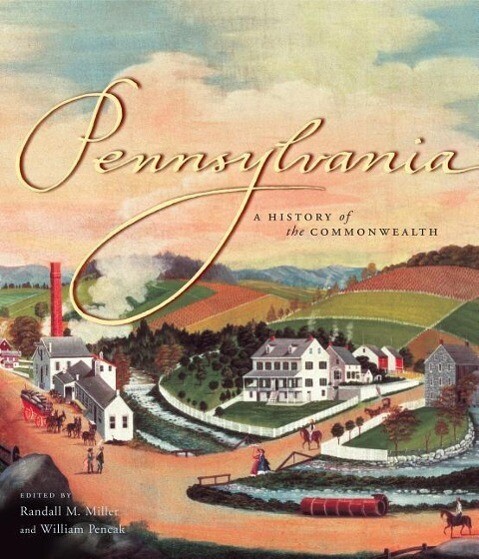The Keystone State, so nicknamed because it was geographically situated in the middle of the thirteen original colonies and played a crucial role in the founding of the United States, has remained at the heart of American history. Created partly as a safe haven for people from all walks of life, Pennsylvania is today the home of diverse cultures, religions, ethnic groups, social classes, and occupations. Many ideas, institutions, and interests that were first formed or tested in Pennsylvania spread across America and beyond, and continue to inform American culture, society, and politics. This book tells that story -- and more. It recenters Pennsylvania in the American historical narrative.
Pennsylvania: A History of the Commonwealth offers fresh perspectives on the Keystone State from a distinguished array of scholars who view the history of this Commonwealth critically and honestly, using the latest and best scholarship to give a modern account of Pennsylvania's past. They do so by emphasizing the evolution of Pennsylvania as a place and an idea. The book, the first comprehensive history of Pennsylvania in almost three decades, sets the Pennsylvania story in the larger context of national social, cultural, economic, and political development. Without sacrificing treatment of the influential leaders who made Pennsylvania history, the book focuses especially on the lives of everyday people over the centuries. It also magnifies historical events by examining the experiences of local communities throughout the state.
Pennsylvania: A History of the Commonwealth is divided into two parts. Part I offers a narrative history of the Commonwealth, paying special attention to the peoplingprocess (the movement of people into, around, and out from the state); the ways people defined and defended communities; the forms of economic production; the means of transportation and communication; the character, content, and consequences of people's values; and the politic
Inhaltsverzeichnis
Foreword by Brent D. Glass, Executive Director, PHMC Preface; Introduction: Why Should We Care about; Pennsylvania History? Part I: The History; 1. The First Pennsylvanians by Daniel K. Richter (University of Pennsylvania); 2. Encounter and Experiment: The Colonial Period by Susan Klepp (Temple University); 3. The Promise of Revolution: 1750-1800 by William Pencak; 4. Building Democratic Communities: 1800-1850 by Emma Lapsansky (Haverford College); 5. Civil Wars: 1850-1900 by Walter Licht (University of Pennsylvania); 6. Reforming the Commonwealth: 1900-1950 by David R. Contosta (Chestnut Hill College); 7. The Post-Industrial Age: 1950-2000 by Philip Jenkins (Penn State University); Epilogue: The Making and Unmaking of the Pennsylvanian Empire by Michael Zuckerman (University of Pennsylvania); Part II: Ways to Pennsylvania's Past; 8. Geography by Wilbur Zelinsky; (Penn State University); 9. Architecture by Richard J. Webster; (West Chester University); 10. Archaeology by Verna L. Cowin; (Carnegie Museum of Natural History); 11. Folklore and Folklife by Simon J. Bronner; (Penn State University, Harrisburg); 12. Genealogy by James M. Beidler; (Genealogical Society of Pennsylvania); 13. Photography by Linda Ries; (The Pennsylvania State Archives); 14. Art by Randall M. Miller and William Pencak; 15. Oral History by Linda Shopes (PHMC); 16. Literature by David Demarest; (Carnegie Mellon University); Appendix; Select Bibliography; List of Contributors; Index
